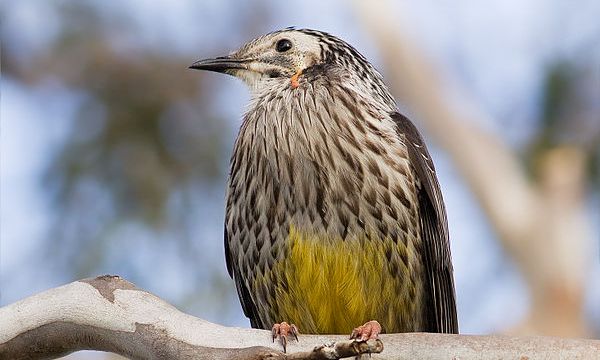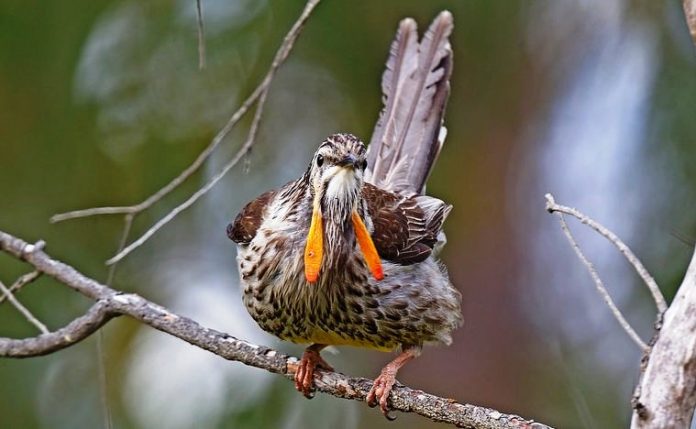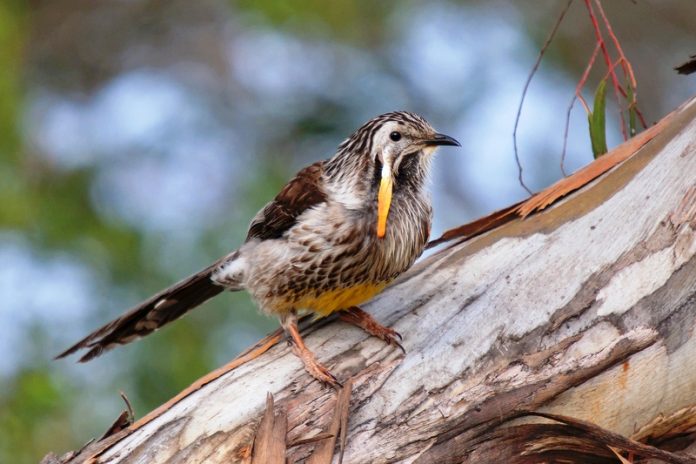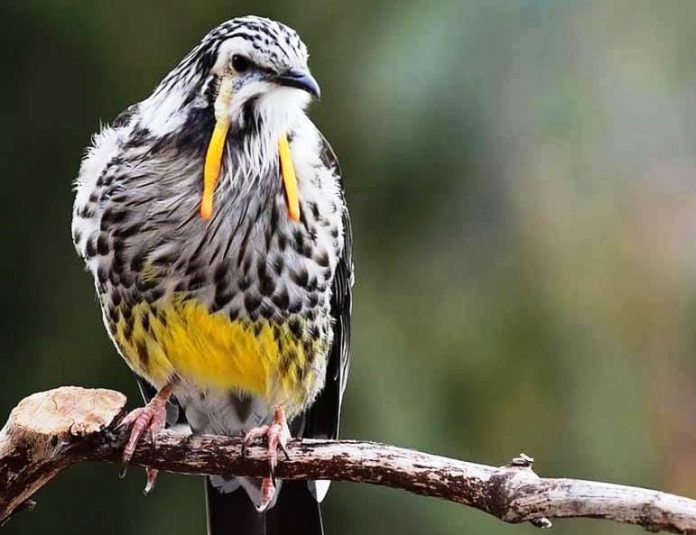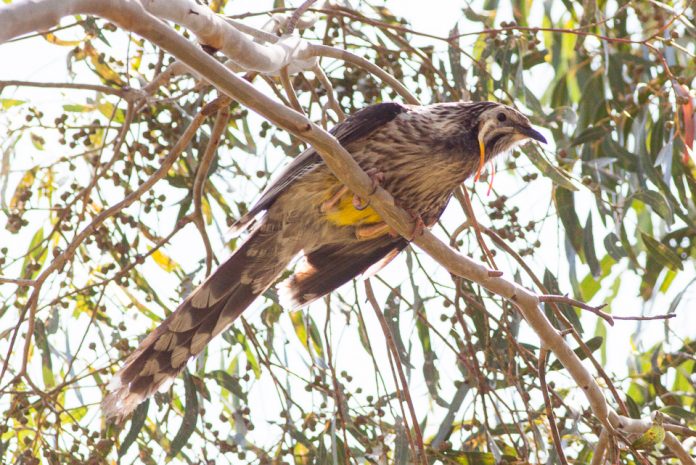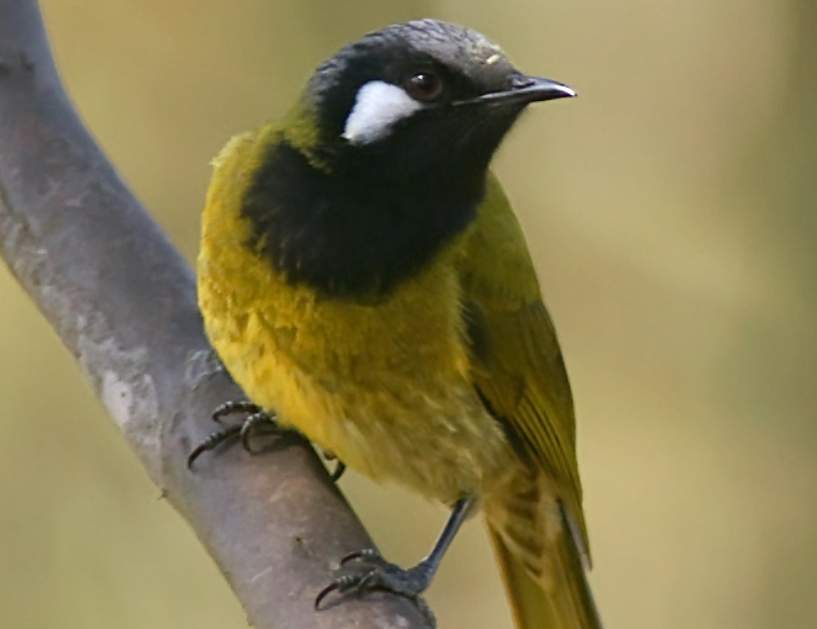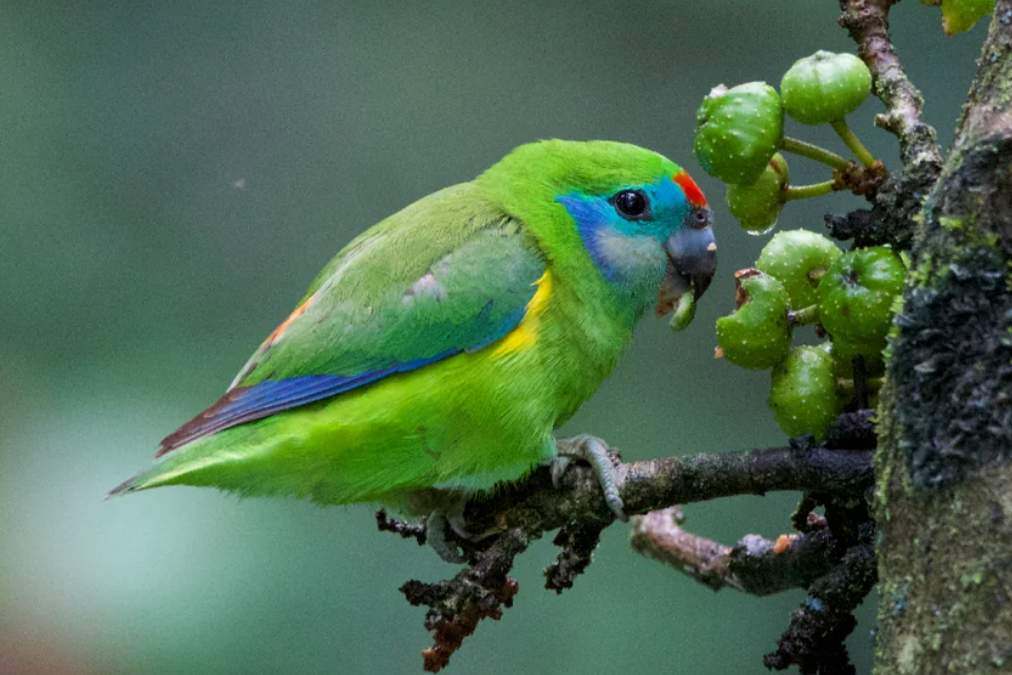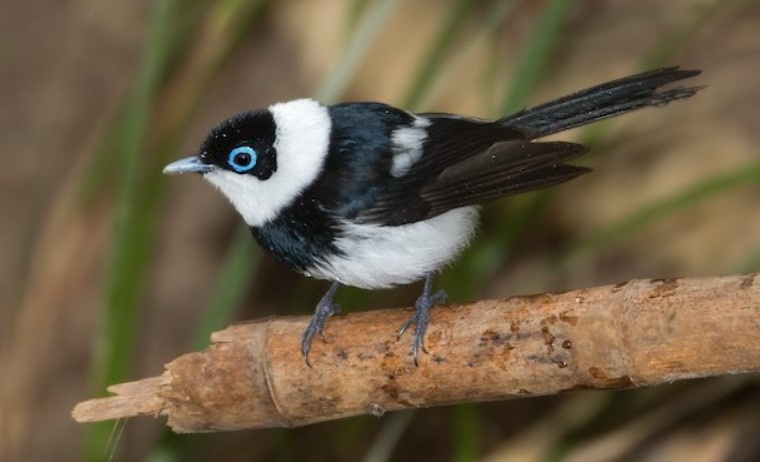The largest of all honeyeaters is the Yellow Wattlebird (Anthochaera paradoxa), named for the pendulous orange-yellow wattles that hang from its cheeks. Males may reach more than 500 millimeters in length and weigh more than 250 grams. This and their nectarivorous diet make them good for eating whenever they fatten up on late-flowering eucalypts at the end of summer; because of this and their depredations in orchards, they were subject to an open shooting season each autumn until 1972.
Yellow wattlebirds endemic to Tasmania and King Island are birds of tall, mature eucalypt forests, but they do range out into woodland heath, gardens, and orchards to feed. They are opportunistic foragers, converging in groups of l0–20 on the pockets of flowering eucalypts, rifling nectar from blossoms, gleaning insects and spiders from foliage, lapping sugary exudates from stems, and pecking fruit, both in orchards and on native shrubs—Cyathodes and Astrodoma—to within a meter of the ground.
Most feeding is done in the forest canopy; the birds travel in loose bands during autumn and winter, moving from tree to tree without stopping long for anyone. In this way, some groups work through the same local pocket of forest day after day, others wander randomly, and still others follow regular seasonal paths—from mountains to lowlands in autumn and back again in spring.
As they travel, they ‘cough’ regularly in contact, usually upon landing from a short flight through or over the treetops. During breeding, flocks break up into territorial pairs or petite groups. Repetitive duetting calls at trees confirm pair bonds. This bird is also known as the long-wattle bird or Tasmanian wattlebird.
The size of the Yellow Wattlebird male is about 480 mm in length, and the female is about 440 mm with a very long tapered tail. Both sexes are similar. The crown to mantle boldly striped grey and white; back, rump, and wings browner grey, with dusky and white shaft streaks and edging, light feathers tipped narrowly white. The tail is gray-brown, tipped broadly white. Face hairy grey-white with 30–40 mm long orange-yellow wattles hanging from cheeks; dusky malar line.
The throat bearded pale gray, grading to gray-white; dusky-shafted breast, flanks, and undertail; center of belly yellow. Eyes are dark brown, with a black bill. The feet are dull yellow. The immature bird is an adult, but its belly is dull and its tail is a few wattles shorter. The call of the Yellow Wattlebird is a discordant kuk, quok, or ku-kuk by males for contact. The song of Yellow Wattlebird is gargling by females interspersed with harsh croaks from males in a duet.
The nesting and breeding season is July–January. The bird builds a nest in a substantial, untidy cup of bark, twigs, and leaves, lined with feathers, down, and fine grass, placed in an upright fork 5–30 m high. Eggs: two-three; pale salmon-pink finely and sparsely spotted with red-brown and purple-grey; oval to tapered-oval, about 36 x 24 mm.
The incubation period is about 15–16 days. However, the young bird fledges in about 18–20 days. The distribution of the Yellow Wattlebird is all of Tasmania except the rain-forested west coast; also King Island, Eucalypt forests, and woodland.
Related Reading: White-fronted Honeyeater (Phylidonyris albifrons)
